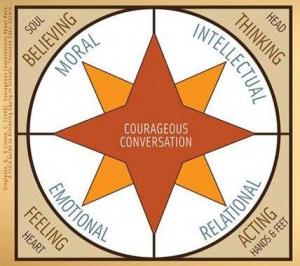Class Homepage
VCHS Junior Class Trip
-
-
What is implicit bias and how is that different from racism? This 2:26 minute video explains implicit bias.
-
Here’s a paradox: The harder we try to act "super normal" around people of other races, the more likely we'll be super weird. Is there a way around this? Hint: Yes.
-
The data shows that when we SLOW down and take time, we can improve on our biases and compassion.
-
What team you are on has wide-scale impacts on how you approach life and react to events around you.
-
The Ladder of Inference, first put forward by Harvard Professor Argyris, helps you understand the thinking steps that can lead you to jump to wrong conclusions, and so helps you get back to plain reality and facts.
-
How to you audit yourself for where you might be unintentionally narrowing your facts/data. You can also take an online assessment to help you see where you might have some bias: https://implicit.harvard.edu/implicit/takeatest.html
-
The following questions help you to work backward (coming down the ladder, starting at the top):
- Why have I chosen this course of action? Are there other actions I should have considered?
- What belief lead to that action? Was it well-founded?
- Why did I draw that conclusion? Is the conclusion sound?
- What am I assuming, and why? Are my assumptions valid?
- What data have I chosen to use and why? Have I selected data rigorously?
- What are the real facts that I should be using? Are there other facts I should consider?

